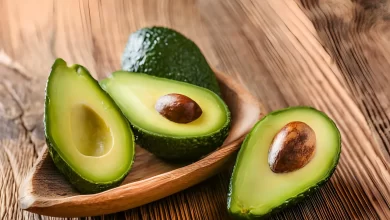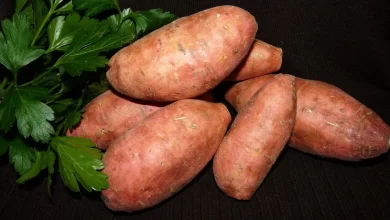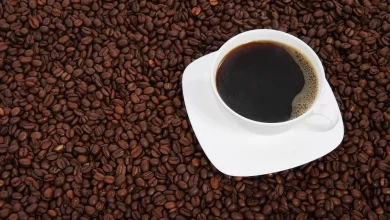Peanuts have a flavour that is hardy, buttery, and “nutty.” Peanuts are known by a variety of names around the world, the most prominent of which being “goober” or “goober pea.” The word “goober” comes from the Bantu word “nguba,” which means “peanut” in the Bantu language. Arachis hypogaea are the scientific name for peanuts. Protein, fat, and fibre are all abundant in ground nuts. While peanuts contain a lot of fat, the majority of the lipids in them are considered “good fats.” These fats truly aid in the reduction of cholesterol levels. Magnesium is another essential mineral found abundantly in peanuts.
- Peanuts are grown in tropical and subtropical regions all over the world, and the peanut is native to the Western Hemisphere. It most likely originated in South America and spread throughout the New World as Spanish explorers discovered the versatility of the peanut. Peanuts accompanied the Spaniards when they returned to Europe.
- Approximately 540 peanuts are needed to make 340 gm of peanut butter.
- In the United States, it is prohibited to label a product as “peanut butter” if it contains fewer than 90% peanuts.
- Peanuts Do Not Require As Much Water As Other Nuts need. During kernel growth, peanut trees require 1.5 to 2 inches of water each week; yet, an ounce of peanuts requires only five gallons of water, but an ounce of almonds requires 80 gallons of water.
- Groundnuts are a legume (in the same family as peas and lentils) rather than a genuine nut. As a result, tree nuts such as almonds, Brazil nuts, walnuts, hazelnuts, macadamia nuts, pistachios, pecans, and cashews might cause allergic reactions in those who are sensitive to peanuts.
- The peanuts are also known as the groundnut, goober (U.S.), Pindar (U.S.) or monkey nut (U.K.).
- Peanuts do not contain any cholesterol and are packed with healthy fats as well as lots of Protein. In 100g of groundnuts, there is approximately 26g of Protein.
- Peanuts have been shown to contain resveratrol, a powerful anti-ageing compound found in red wine and grapes. Resveratrol has been found in studies to inhibit fat cell proliferation and improve sugar uptake from the blood.
- There are four varieties of peanuts that are sold worldwide. These are Runner, Virginia, Spanish and Valencia. Each of these groundnuts is distinctive in flavour and size.
- Reese’s Peanut Butter Cups is the top-selling candy bar in the United States. In the year 2012, the annual sales of this product were worth 2,603 million USD. Whereas Snikkers, which is produced by Mars Inc, is the most selling Candy Bar globally, which is a mixture of peanuts, caramel and nougat wrapped inside a layer of chocolate.
- Peanuts are the most popular snack nut in the United States, accounting for two-thirds of the market.
- In 2020, the United States produced approximately 6.13 billion pounds of peanuts.
- The leading countries that produced peanuts in the year 2020 were China 36%, India 14%, Nigeria 9%, Sudan 6%, the United States 5% and other countries 30 %.
- Peanut plants require 1.5 to 2 inches of water per week during kernel development; however, an ounce of peanuts requires only five gallons of water to produce, compared to 80 gallons for an ounce of almonds.
- Two U.S. Presidents Were Peanut Farmers. The first was Thomas Jefferson, who became the third president of the United States (1801-1809). The second was Jimmy Carter, Who served as 39th president of the country from 1977 to 1981.
- The small town of Durant is proud to be home to the World’s Largest Peanut. It’s 3 feet long and 18 inches around and is crafted with 50 pounds of aluminium.
- Marcellus Gilmore Edson of Canada patented peanut paste in 1884, which is the finished product of milling roasted peanuts between two heated surfaces. Dr John Harvey Kellogg (creator of Kellogg’s cereal) patented a method for making peanut butter from raw peanuts in 1895.
- The Composition of peanuts nutrients are Protein 20.7%–25.3%, crude fat 31%–46%, ash 1.2%–2.3%, crude fibre 1.4%–3.9%, carbohydrate 21%–37%, and moisture 4.9%–6.8%.
- About 40 days after planting ground nuts, yellow flowers appear around the lower portion of the plant. The petals fall off as the peanut ovary forms when the flowers pollinate themselves.
- On November 17, 2017, Andre Ortolf of Germany set the world record for consuming most peanut butter in one minute. He consumed 378g of peanut butter in just one minute.
- On February 20, 2008, Colin Jackson (U.K.) threw a peanut to the distance of 37.92 metres (124 feet 4 inches) at the Welsh Institute of Sport at Sophia Gardens, Cardiff, UK. It is the world record for throwing a Peanut to the furthest distance.
- According to USDA and U.S. Census data of 2020, Peanut consumption per capita has reached an all-time high of 7.6 pounds in the United States.
Nutrition Facts of Peanuts
Here are the nutritional profile of one 100g of raw peanuts.
- Calories: 567 kcal
- Protein: 25.8 grams
- Fiber: 2.34 g
- Carbohydrate: 16.1 grams
- Sugar:4.7 grams
- Fiber: 8.5 grams
- Water: 7%
- Fat: 49.2 grams
- Saturated Fat: 6.28 grams
- Monounsaturated Fat: 24.43 grams
- Polyunsaturated Fat: 15.56 grams
- Omega-3: 0 grams
- Omega-6: 15.56 grams
- Trans Fat: 0 grams
References
- Wikipedia-Peanuts
- Nationalpeanutboard.org(How peanuts grow)
- Kidshealth.org(Peanuts health)
- hyprote.in(Best selling candy Bar)
- Standard.net(Tomatoes tallest trr)
- Nationalpeanutboard.org(water needed to grow peanuts)
- nationalpeanutboard.org(Peanuts Per Capita consumption is United states)






